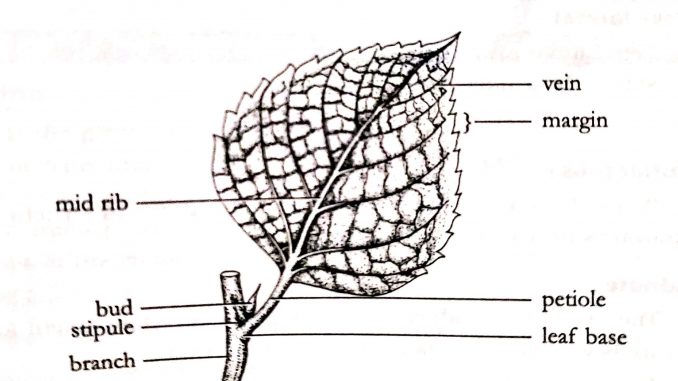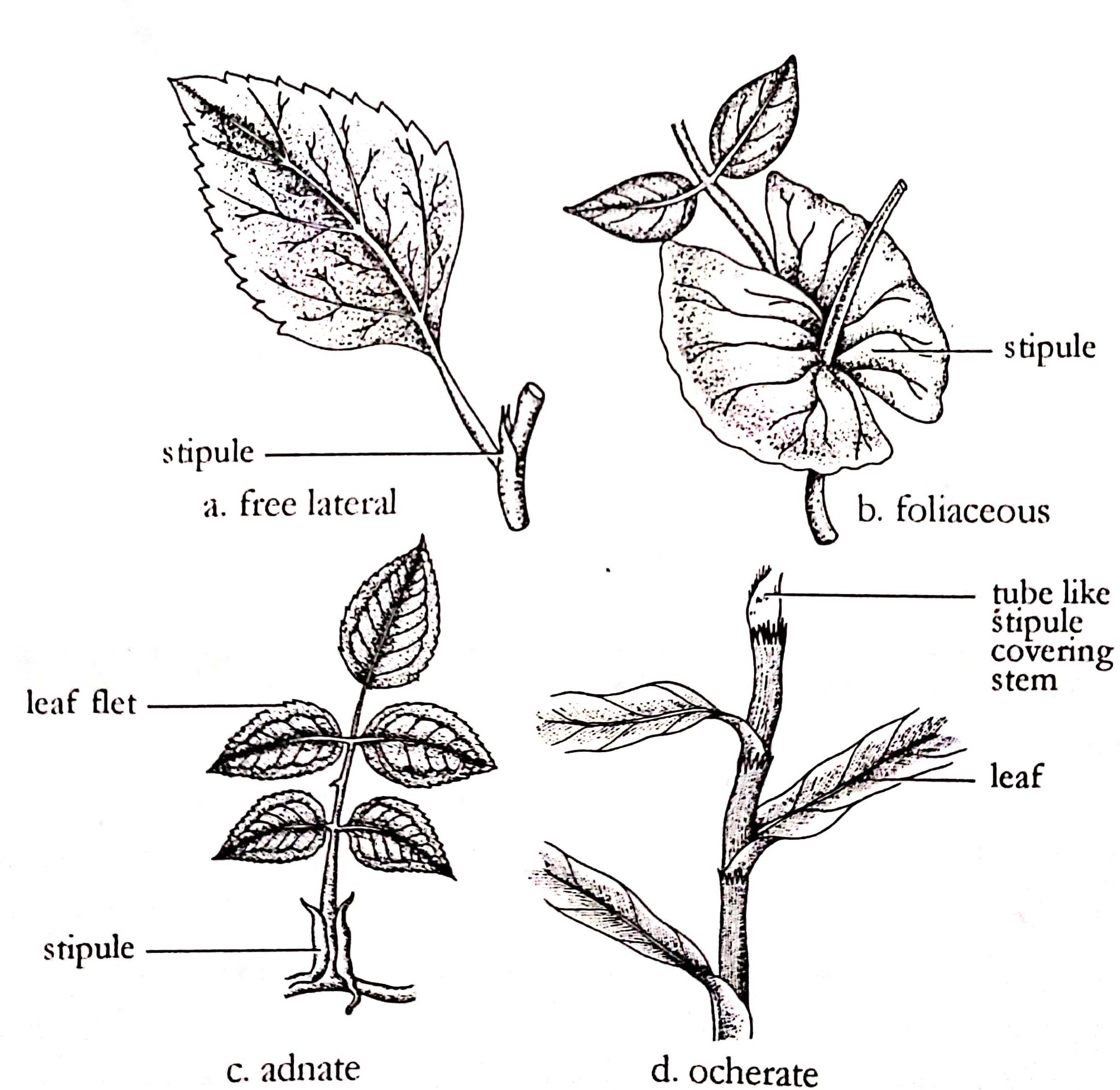
- The leaf is a flattened lateral out-growth of the stem/ branch and bears a bud in its axil.
- It is green in color due to the presence of chlorophyll and constitutes the main photosynthetic organ of the plants.
- They develop acropetally and exogenously.
- A typical angiospermic leaf consists of three parts, namely;
- A leaf base
- A petiole
- A lamina
1. Leaf base:
- It attaches the leaf with the stem or branch.
- In monocotyledons, the leaf base expands into a sheath that partially or wholly covers the stem while in many dicotyledonous plants it bears two lateral out growths called the stipules.
- Depending on the presence or absence of stipules, a leaf may be stipulate or exstipulate.
- In many plants, the leaf base is swollen and is termed pulvinus.
- Stipules vary in form and may be of the following types:

a. Free lateral: Free lateral stipules are small and greenish outgrowths one on either side of the leaf base. E.g. China rose
b. Foliaceous: When the stipules are large, green and leaf like in structure, they are known as foliaceous. E.g. Sweat pea and pea
c. Adnate: The two stipules adhere to the petiole to a certain height and the structure is wing like in appearance. E.g. Rose
d. Ochreate: Here the stipules form a tubular structure covering the stem above the node. E.g. Polygonum
2. Lamina:
- It is green, expanded portion of the leaf and is traversed by a number of veins and veinlets.
- There is usually a middle prominent vein which is known as the midrib.
- Veins provide rigidity to the lamina and act as channels of transport of the food materials in and out of the leaf.
- The shape of the lamina varies from plant to plant which may be of the following types:

a. Linear: When it is long, narrow and flat as in grasses.
b. Lanceolate: When it is lance-shaped as in bamboo.
c. Oblong: When it is wide and long as in banana.
d. Ovate: When it is broader at the base and narrower at the apex as in China rose, banyan.
e. Cordate: When it is heart-shaped as in Netel.
3. Leaf apex:
- The tip of the lamina is described as apex which is of several types as follows:

a. Acute: When it is pointed but not stiff. E.g. China rose
b. Cuspidate: When it is pointed, hard, stiff and spiny structure. E.g. Date-palm
c. Obtuse: When it is rounded. E.g. Banyan
d. Acuminate: When it is long and tapering. E.g. Peepall
e. Emerginate: When there is a deep notch, bifurcating the tip. E.g. Bauhinia
4. Margin:
- The margin or the outline of the lamina is quite variable, such as:

a. Entire: When it is even and smooth. E.g. Mango
b. Wavy: When the outline although smooth, is wavy. E.g. Ashok tree (Polyalthia)
c. Serrate: When the margin is like the teeth of a saw. E.g. China rose
5. Venation:
- The arrangement of veins in the lamina is termed as venation. It is of two types:

a. Reticulate venation:
- When the veins are irregularly distributed forming a network, it is known as reticulate venation.
- It is a characteristic feature of the dicotyledonous plants. E.g. Peepal, China rose etc.
b. Parallel venation:
- When the veins are parallel an don’t form a network, it is called parallel venation.
- It is a characteristic feature of monocotyledonous plants. E.g. Canna, grasses.
- In both the types often, a prominent mid-vein is observed. In that case, it is described as unicostate. E.g. Peepal, Mango, Canna etc.
- There are also leaves with more than one prominent vein. It is called multicostate. E.g. Plum, Fan palms etc.